Jacques Alexandre Bernard Law de Lauriston
Grand Eagle of the Légion d'honneur, Count of the Empire
Pronunciation:
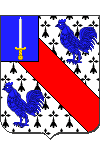
Jacques Alexandre Bernard Law de Lauriston was born in Pondicherry, India, on February 1, 1768. He was the grand-nephew of financier John Law, Comptroller General of Finance.
In 1784, he attended the École Militaire in Paris, where he made friends with young Napoléon Bonaparte, a year his junior. He graduated on September 1, 1785 as second lieutenant in the Toul regiment.
Rallied to the ideas of the Revolution, Lauriston served in the Armée du Nord with the rank of captain in 1792. Aide-de-camp to General Nicolas Denis Warel de Beauvoir, he distinguished himself at the siege of Maastricht, then Valenciennes in 1793. In 1795, he was appointed brigade commander of the 4th horse artillery regiment.
He resigned in April 1796 and left the army, but in 1800 the First Consul Napoleon Bonaparte recalled him to service and appointed him one of his aides-de-camp.
Lauriston followed his former colleague to Marengo. Bonaparte entrusted him with diplomatic missions in Copenhagen in 1801, then in London in 1802, where he was enthusiastically welcomed following the Peace of Amiens treaty between France and the United Kingdom.
On his return to France, Lauriston was appointed Brigadier General and made Commander of the Legion of Honor.
In 1805, he was appointed Major General in Martinique by Admiral Pierre-Charles de Villeneuve. Back on land, he took part in the Austrian campaign. He was appointed Governor of Ragusa after Austerlitz, then Governor General of Venice in 1807, and was created Count of the Empire the following year.
Lauriston accompanied the Emperor to Spain, then Germany. At Wagram, he commanded the 100-strong artillery of the Guard. Following the Treaty of Schönbrunn, he accompanied Archduchess Marie-Louise of Austria to France for her marriage to Napoleon.
He then held a number of ambassadorial posts, most notably in St. Petersburg from February 1811, where he succeeded Armand de Caulaincourt.
During the French invasion of Russia of 1812, he again served as Napoleon's aide-de-camp, joining him in Smolensk in August. After the capture of Moscow, the Emperor entrusted him with a mission to negotiate peace with General Mikhail Illarionovich Golenichev-Kutuzov (Михаил Илларионович Голенищев-Кутузов), whom he met on October 5 . This mission having failed, Lauriston skilfully commanded the rearguard under the dramatic conditions of the retreat.
In 1813, he was again on the battlefields of Lützen, battle of Bautzen and Wurtzen. At the end of the battle of Leipzig, he was taken prisoner on October 19, and taken to Berlin.
Released in 1814 after the Emperor's first abdication, Lauriston became aide-de-camp to the Comte d'Artois, then commanded a company of musketeers.
During the Hundred Days, he accompanied the King Louis XVIII to Béthune, before retiring to his lands.
During the Second Restoration, he was made a peer de France in August 1815, and voted for death at the trial of Marshal Michel Ney in December of the same year.
He was created Marquis in 1817, appointed Minister of the King's Household in 1820, and in June 1823 raised to the dignity of Marshal of France.
He died in Paris on June 11, 1828, in the arms of a dancer, and was buried in the Père-Lachaise cemetery, division 14 .
"Jacques Alexandre Bernard Law de Lauriston". Nineteenth Century French school.
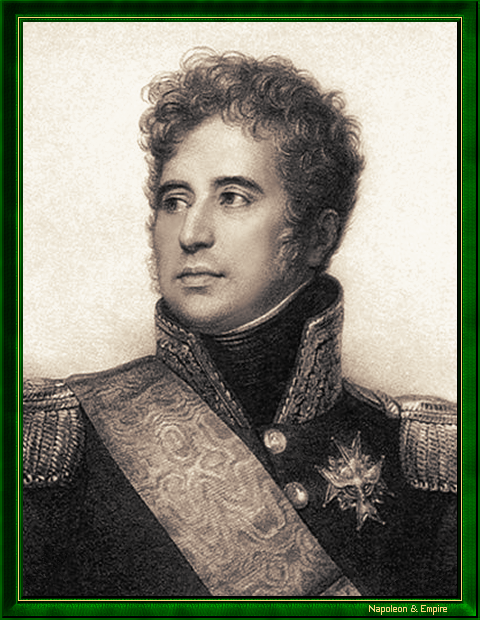
Lauriston's name is inscribed on the 13th column (east pillar) of the Arc de Triomphe de l'Étoile, and has been given to a street in the sixteenth arrondissement of Paris.
Other portraits
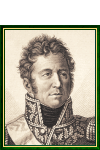
"Jacques Alexandre Bernard Law de Lauriston" by Jean Baptiste Edouard Detaille (Paris 1848 - Paris 1912).
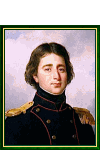
"Captain Jacques Alexandre Bernard Law de Lauriston in 1792" by Alexandre-François Caminade (Paris 1783 - Versailles 1862).
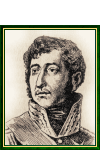
"Jacques Alexandre Bernard Law de Lauriston". Nineteenth Century engraving.